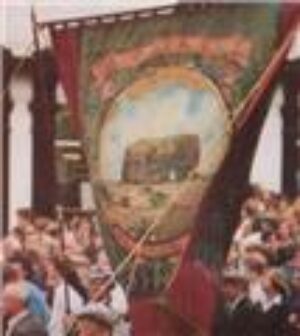In 1858 when Michael Faraday instructed Fredrick Holmes to install his carbon arc lamp in the tower of South Foreland lighthouse, the lighthouse became the first in the world to be powered by electricity. The experiment was such a success that Trinity House saw the potential of electricity as the future source of power for all it’s lighthouses. In 1871 when Souter Point came on line it was the first purpose built lighthouse in the world to be powered by electricity.
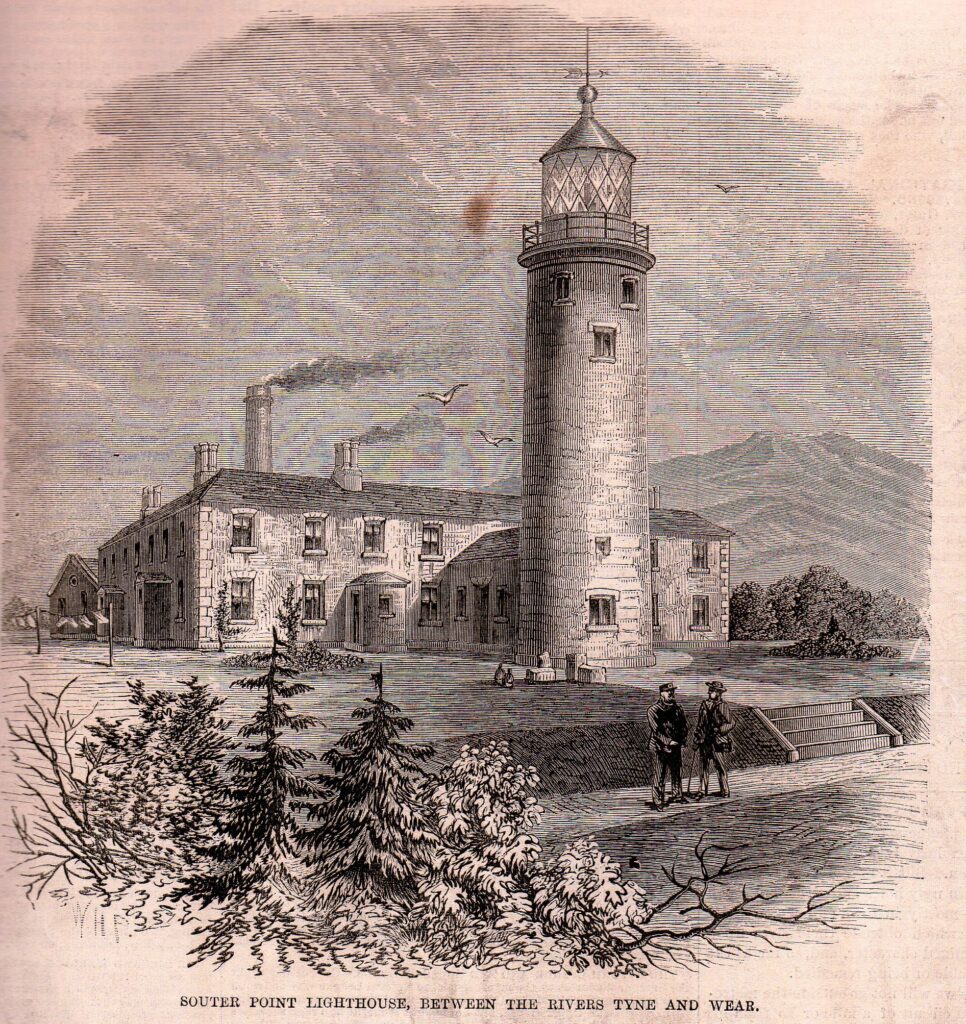
The history of Souter is well documented and good accounts can be found on websites such as Wikipedia, Trinity House and Souter’s own website.
On this page we will look at the relation between the lighthouse and its dirty, noisy neighbour.
The lighthouse is located on Lizard Point but takes its name from Souter Point which is located a mile to the south and the intended site for the lighthouse. At a late stage it was felt that the higher cliffs at Lizard Point would offer better visibility therefore the lighthouse was built there instead. The name Souter Point was retained for the lighthouse in order to avoid confusion with the then recently built Lizard Lighthouse in Cornwall.
Souter Point is the southernmost promontory on a bay known locally as Jackie’s Beach.
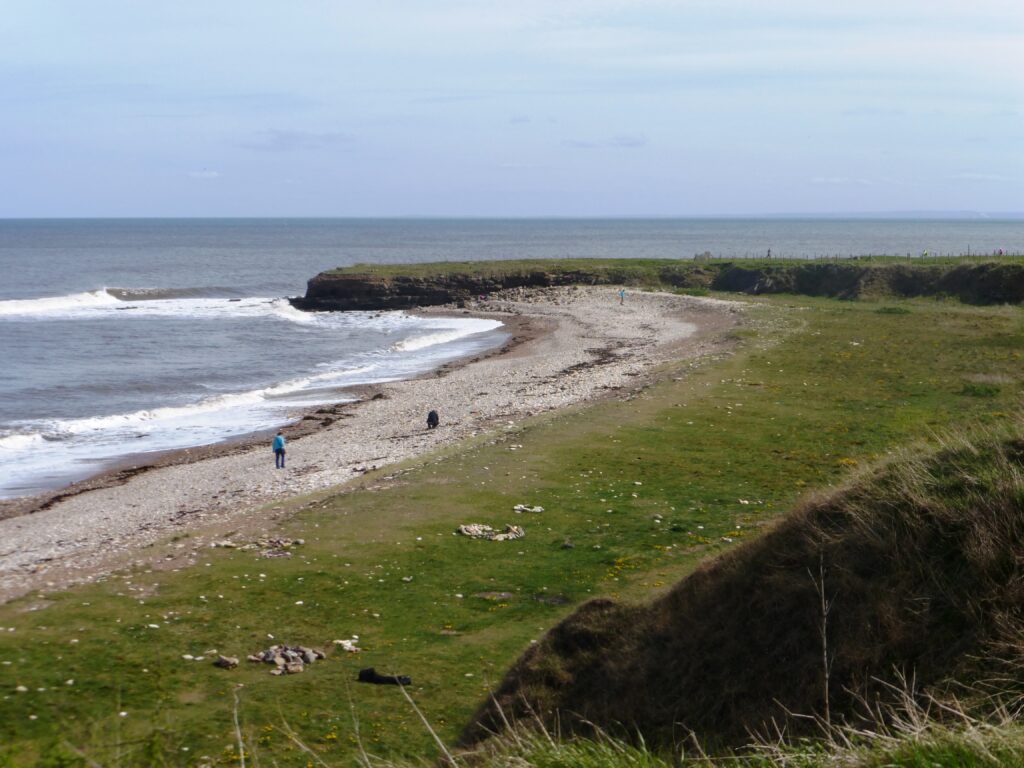
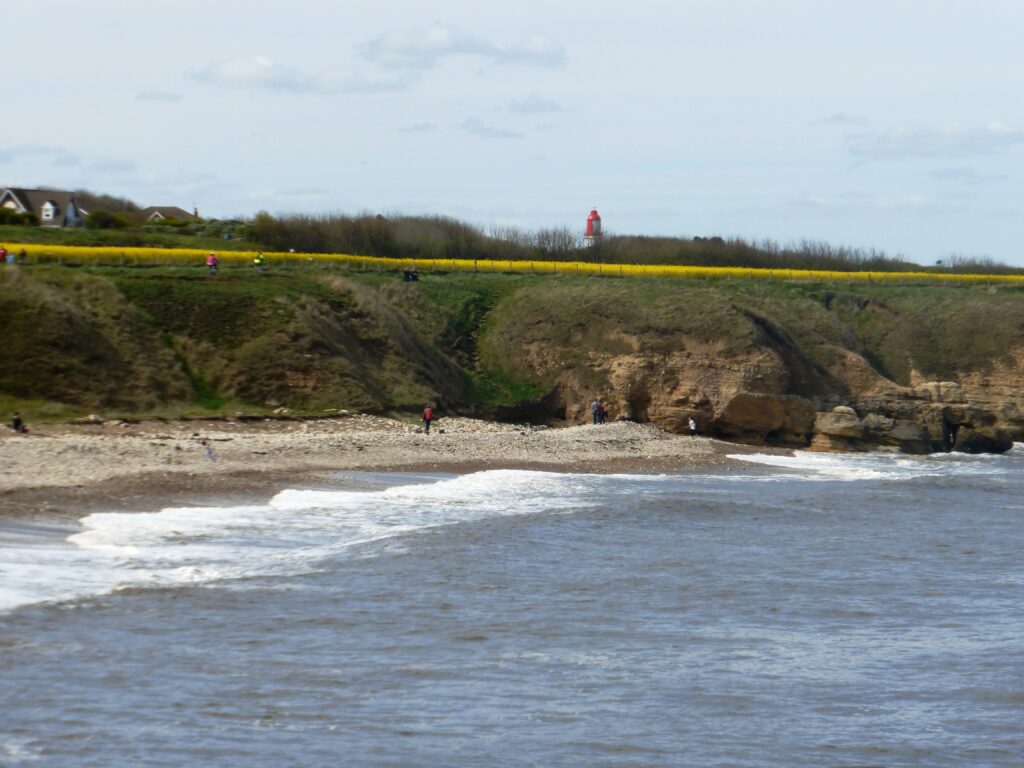
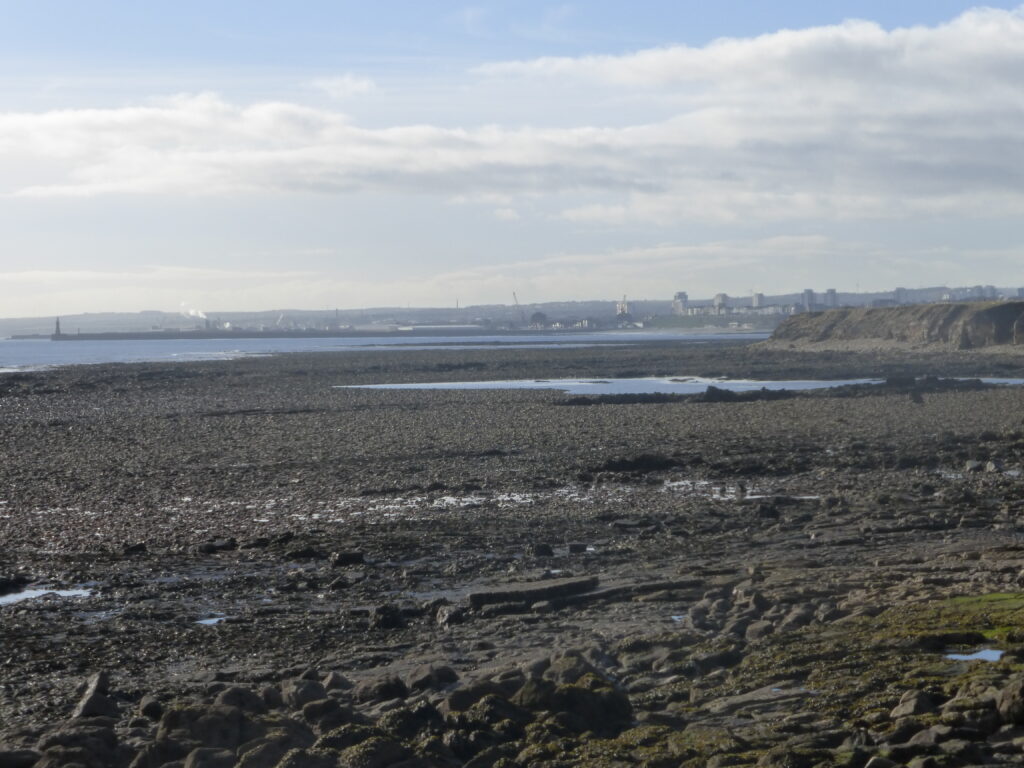
Unfortunately for the brethren of Trinity House the time they had taken in deciding where to build the lighthouse had seen great changes occurring in and around the Marsden area.
The nations insatiable thirst for coal had seen the newly formed Whitburn Coal Company buying up vast swathes of land around Marsden. Within 2 years of the lighthouse coming on line the Coal Company were sinking a new pit within a few hundred yards of Souter.
Souter had been designed by James Douglass and he remained a frequent visitor during the early operational years of the lighthouse. During his visits Douglass became increasingly intrigued with the sinking of the colliery next to his lighthouse and would often visit the site to see how things were progressing. He became great friends with John Daglish who was the Chief Engineer on the project and was a frequent visitor to Marsden Hall, Daglish’s family home.
In 1882 when Daglish produced a discussion paper to the Institute of Mining Mechanical Engineers “On the sinking of two shafts at Marsden, for the Whitburn Coal Company” Douglass was there in support of his friend.
An extract from the minutes of that meeting in 1882 reads;
‘Sir James Douglass remarked that Mr Daglish was a neighbour of his, having commenced operations close to one of the lighthouses of which he had charge. He well remembered the commencement of the works at the colliery.’ ‘He had had the opportunity of watching the works during their progress, and he desired to add his testimony as to the extraordinary skill and steady perseverance with which they had been conducted’.
The first public spat between the Coal Company and Trinity House had occurred in August 1875 when the Coal Company applied for a license to build a public house at Marsden directly opposite the lighthouse gates.
Bitter exchanges took place between the Coal Company and the brethren of Trinity House who objected to the proposal stating that a public house being placed in such close proximity to the lighthouse could be a temptation to their ‘servants’ to drink.
The public house was never built in the village forcing locals to walk to either the Marsden inn or the Grotto.
However good relations soon returned with the Coal Company leasing 2 of the keepers cottages from Trinity House for their workforce.
By now Souter was surrounded by a hive of industrial activity with the colliery to the south, a quarry to the west and the village to the north.
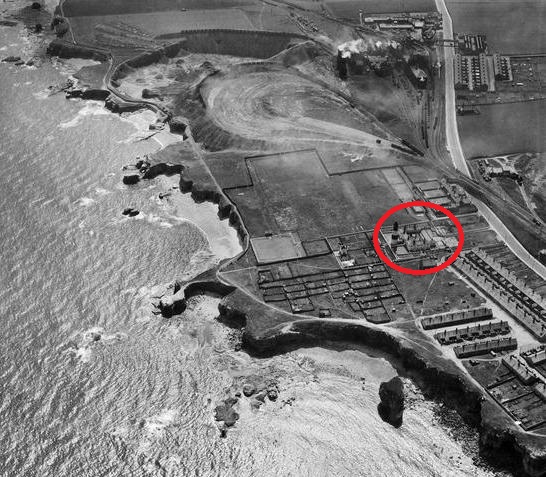
The colliery railway line also ran within a few hundred yards of the lighthouse.
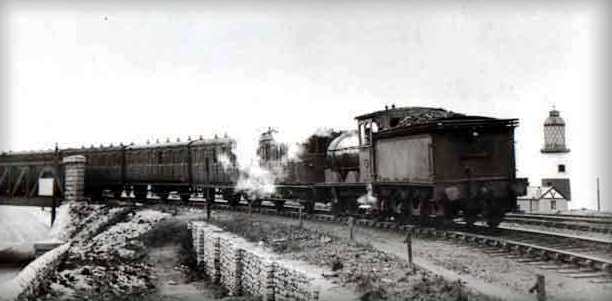
Coal and limestone dust soon became an irritant to the lighthouse keepers. Despite all their endeavours machinery and other installations in the building were constantly covered in dust.
The Coal Company and Trinity House clashed time and time again over dust control measures. The Coal Company responding by saying if the women folk of the village can keep their homes clean, then it was poor show if the keepers were unable to do the same.
However it is also fair to say that the women folk of the village were always moaning about the dust too. Especially the limestone which descended on the village in a cloud settling and covering everything in a film of yellow dust.
Out of all Trinity House postings Souter must have been the muckiest a lighthouse keeper could be allocated.
Over the years the dust control continued to be a bone of contention between Trinity House and the Coal companies and then later the National Coal Board.
Another issue occurred when Trinity House complained to the NCB that the height of the pit’s spoil heap was obstructing the guiding light which shone from the lower landing window of the lighthouse along the coast towards Sunderland.
The NCB responded by bulldozing the spoil heap into the welfare grounds much to the
displeasure of the locals. Trinity House were also unhappy as one of the sources of the dust was now being pushed closer to the lighthouse.
In 1968 Trinity House lost one of its adversaries when Whitburn colliery was abandoned. However the Quarry continued to flourish and remained a nemesis to Trinity House.
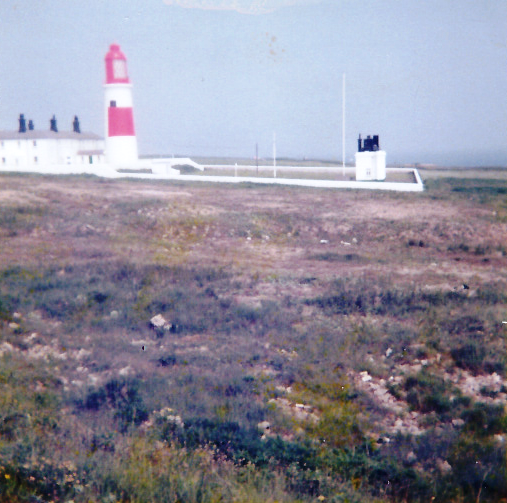
Clashes over dust continued between Trinity House and the quarries owners. At one point the quarry even paid to have the lighthouse repainted.
Hostilities ceased in 1988 when after a hundred years of bickering Trinity House announced the decommissioning of Souter. The lighthouses need had become obsolete due to the advancement in GPS technology.
Today the lighthouse is owned and maintained by The National Trust. It remains a source of pride and a beacon to our proud maritime and industrial past.
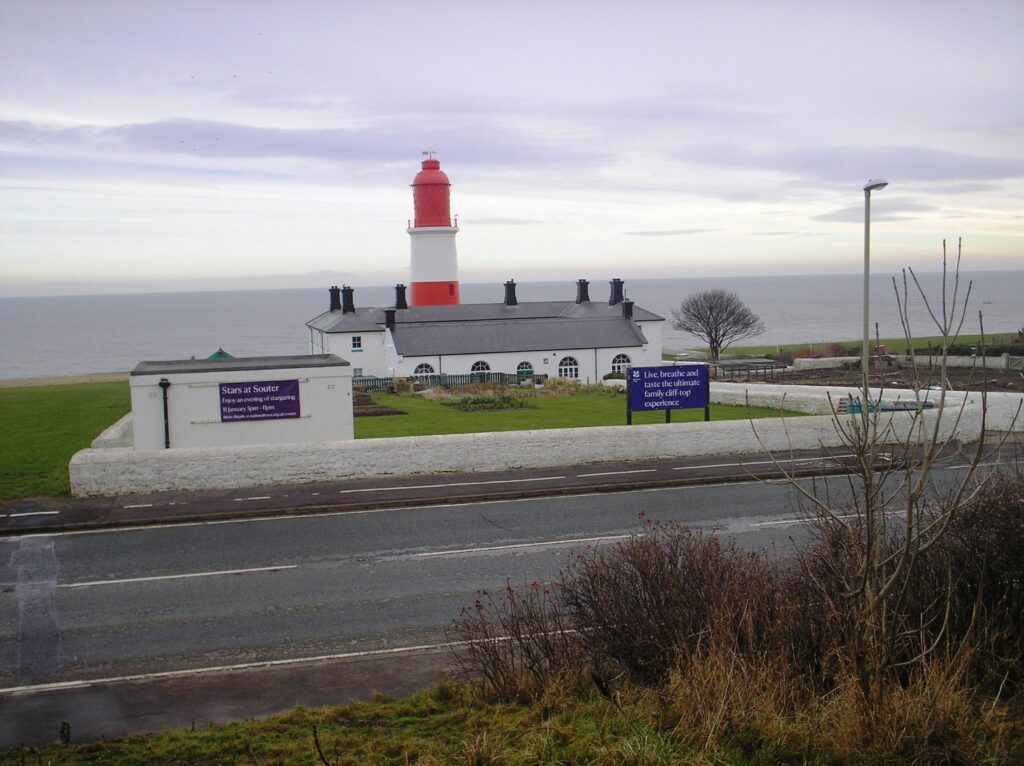
B Cauwood 2015
sources
- Illustrated Times 1871
- Shields Gazette
- Institute of Mining Mechanical Engineers “On the sinking of two shafts at Marsden, for the Whitburn Coal Company” 1882
Copyright © 2013 Marsden Banner Group.
All rights reserved. Permission granted to reproduce text for educational use only (please cite source).
